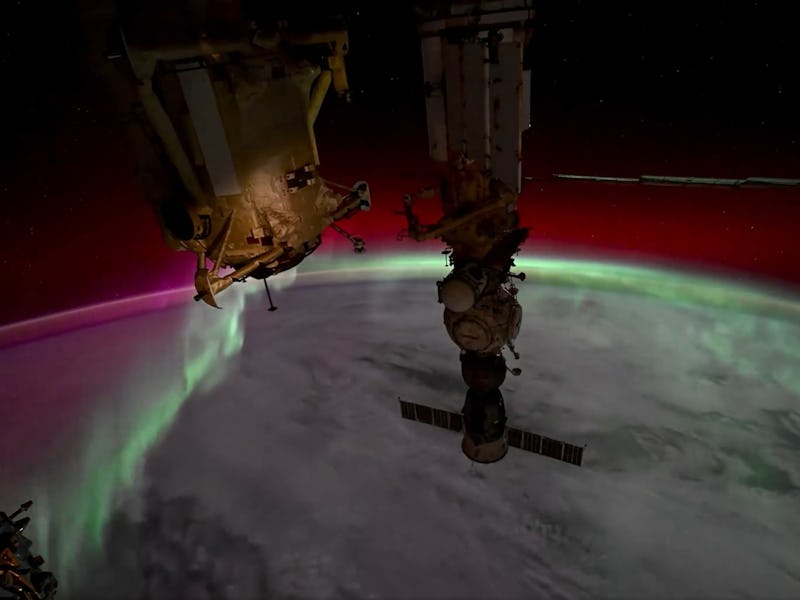Look: NASA Captured This Mesmerizing Video of An Aurora From the ISS
You haven't seen an aurora until you've seen one from space.

Astronaut Matthew Dominick captured this time-lapse imagery of an aurora dancing through the skies over Earth's polar latitudes in streams of flickering red and green light.
A recent uptick in solar activity has lit up the polar skies with auroras: streams of red or green light that happen when charged particles from the Sun race along the lines of Earth’s magnetic field to collide with the upper atmosphere. This usually happens close to the North and South Poles, but auroras have been visible at lower latitudes several times in recent months. Astronauts aboard the ISS arguably have the best view of all, and Matthew Dominick just proved it.
One of thousands of images Dominick captured with his new lenses over the weekend.
Lights, Camera, Space Station
NASA astronaut Matthew Dominick took thousands of photos of the spectacular auroras over the weekend and put them together in this short time-lapse video.
"We received a cargo shipment this week with lots of cool stuff, to include some new camera lenses," wrote Dominick on Sunday. "Spent a good part of the weekend with a 15mm, T1.8 lens. Made a whole bunch of timelapses."
In another post, Dominick added, "The aurora have been amazing the past few days"
Part of the station (and a docked Soyuz crew capsule) hovers in the foreground, the glittering stars of deep space in the distance, and the green and red lights of the auroras dance across Earth's upper atmosphere. At about the 45-second mark, the light of sunrise (which happens about every 90 minutes as the ISS zips around the planet) bathe the docked Soyuz capsule in a pale blue glow.
Another image, not part of the short video, shows part of the ISS in the foreground, with the aurora glowing in Earth's atmosphere — and beyond that, the dense swath of stars that make up the Milky Way's disk.
"Still looking though 1000s of frames, lots of which have aurora, but the Milky Way in this one stood out," wrote Dominick.
Dominick captured the aurora and the Milky Way, and some city lights down on Earth, in this single image.
The new lenses were part of a supply shipment loaded aboard a Cygnus cargo vessel, which docked at the ISS last Tuesday. Cygnus also brought fresh fruit and vegetables, a new supply of coffee, nearly 2,800 pounds of research equipment, more than 3,500 pounds of new hardware for the station, and more than 2 tons of other supplies for the crew.
Those supplies included some clothes and personal food items for stranded Starliner crew members Butch Wilmore and Suni Williams, who are now scheduled to return home on a SpaceX Crew Dragon spacecraft sometime in early 2025.